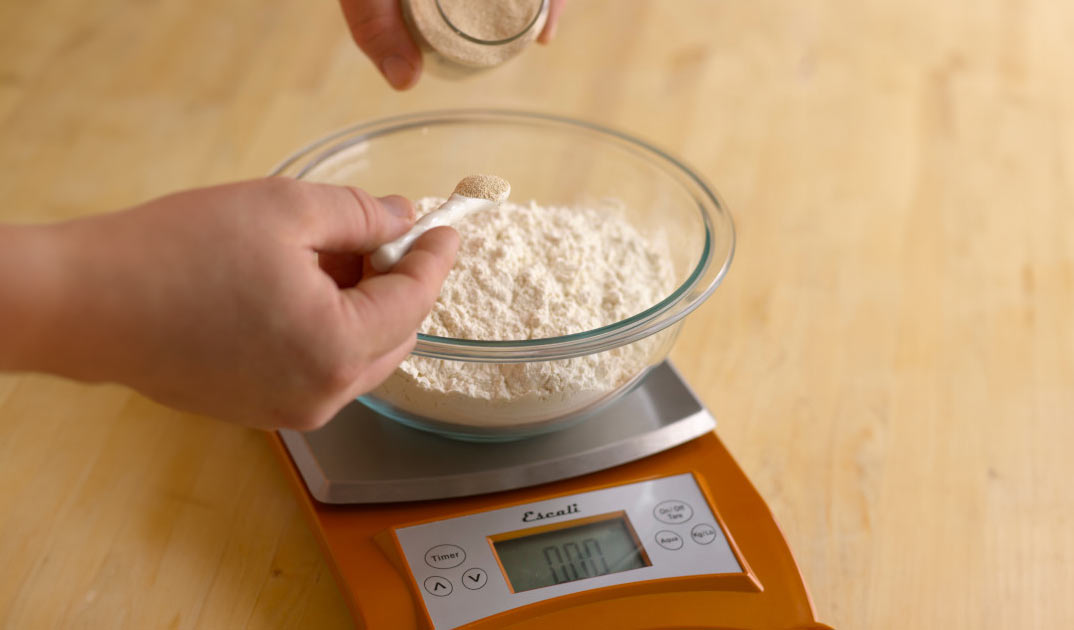Doubling or tripling recipes or cutting them in half successfully requires more than simple multiplication. Recipes for baked goods rely upon a number of “sensitive” ingredients, such as leaveners, flavorings, seasonings, and thickeners. These ingredients don’t scale up or down directly in proportion with other ingredients.
If you are planning to triple a cake recipe, and simply multiply the amount of baking powder it calls for by three, the cake could easily rise up and over the sides of the pan. A mousse might either set into a rubbery consistency or not set at all if you haven’t properly adjusted the amount of gelatin from the original. If a cookie recipe calls for ⅛ teaspoon ground cloves and you quadruple the recipe, the resulting amount of cloves could overpower the other flavors in your cookies.
Changing from one size batch to another may also call for different equipment, mixing times, baking temperatures, or baking times. Scaling a recipe up or down often requires a test run to determine whether the new recipe works well, which means it is rarely a good idea to make a first attempt at doubling a recipe for cakes or puddings when you have dinner guests.
The first step of scaling recipes is to calculate the basic “recipe factor,” which results when you divide the desired yield by the original yield. For example, if you want to change a recipe for muffins so that it makes 4 dozen muffins instead of 1 dozen:
48 muffins (desired yield) divided by 12 muffins (original yield) = 4 (recipe factor).
Or, if you want to make just one loaf of bread instead of two:
1 loaf (desired yield) divided by 2 loaves (original yield) = .5 (recipe factor).
Once you figure out the recipe factor, multiply the measurements for each ingredient by the recipe factor. You may need to round the result or convert it to a more logical unit of measure; 4 tablespoons, for example, is easier to measure as ¼ cup.
Pay special attention to ingredients used for leavening, flavoring, coloring, or thickening. If a pudding to serve 4 calls for 3 tablespoons of flour as a thickener, it is not necessarily true that you will need 12 tablespoons (or ¾ cup) of flour to thicken the same pudding when you prepare it to serve 16. And since many baked goods cannot be adjusted once they are mixed and in the oven, you may need to retest the recipe, using different amounts each time, until the correct texture or flavor is achieved.
The more you know about how foods behave when you cook or bake them, the more success you will have. For scaling up the amount of thickeners and leaveners such as cornstarch, arrowroot, gelatin, and yeast, start with about 75 percent of the amount you calculated using the recipe factor. For flavorings, you might want to lower that to about two-thirds of the amount calculated with the recipe factor. The best advice we can offer, however, is that you make a test batch when you are increasing or decreasing a recipe and make the necessary adjustments to get the results you want.


